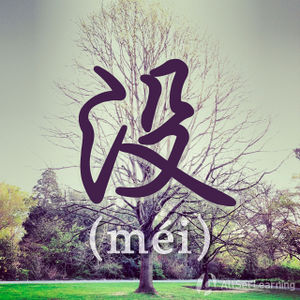Difference between revisions of "Inability with "mei banfa""
Yangrenjun (talk | contribs) |
|||
| Line 18: | Line 18: | ||
<div class="liju"> | <div class="liju"> | ||
| − | * 我 <em>没 办法</em> 帮 你。<span class="trans"> | + | * 我 <em>没 办法</em> 帮 你。<span class="trans">I have no way to help you.</span> |
* 他 <em>没 办法</em> 去 中国。<span class="trans">He has no way to go to China.</span> | * 他 <em>没 办法</em> 去 中国。<span class="trans">He has no way to go to China.</span> | ||
* 我们 <em>没 办法</em> 出去。<span class="trans">We have no way of going out. (maybe we are busy, etc.) </span> | * 我们 <em>没 办法</em> 出去。<span class="trans">We have no way of going out. (maybe we are busy, etc.) </span> | ||
| − | * 没有 糖,我 <em>没 办法</em> 做 蛋糕。 | + | * 没有 糖,我 <em>没 办法</em> 做 蛋糕。<span class="trans">I don't have sugar, there's no way to make a cake.</span> |
| − | * 我 <em>没 办法</em> 让 所有 人 都 喜欢 我。 | + | * 我 <em>没 办法</em> 让 所有 人 都 喜欢 我。<span class="trans">There is no way I can make everyone like me.</span> |
| − | * 我 不 会 说 中文, 我 <em>没 办法</em> 跟 中国 人 说话。 | + | * 我 不 会 说 中文, 我 <em>没 办法</em> 跟 中国 人 说话。<span class="trans">I can't speak Chinese, I have no means of talking with Chinese people.</span> |
| − | * 事情 太 多 了,我 <em>没 办法</em> 在 这 个 星期 完成。 | + | * 事情 太 多 了,我 <em>没 办法</em> 在 这 个 星期 完成。<span class="trans">There's too much to do, I have no means for finishing this week.</span> |
| − | * 我 没 带 钱 包, 所以 我 <em>没 办法</em> 买 东西。 | + | * 我 没 带 钱 包, 所以 我 <em>没 办法</em> 买 东西。<span class="trans">I didn't bring my wallet, so I have no means of buying things.</span> |
| − | * 我 的 手机 不见了,所以 我 <em>没 办法</em> 打电话 给 你。 | + | * 我 的 手机 不见了,所以 我 <em>没 办法</em> 打电话 给 你。<span class="trans">I don't see my phone, so I have no way of giving you a call.</span> |
| − | * 他 很 笨,我 <em>没 办法</em> 跟 他 一起 工作。 | + | * 他 很 笨,我 <em>没 办法</em> 跟 他 一起 工作。<span class="trans">He's really dumb, there is no way I can work with him.</span> |
</div> | </div> | ||
Revision as of 08:26, 22 November 2013
| This article is a stub. Editors can help the Chinese Grammar Wiki by expanding it. |
-
Level
-
Similar to
-
Used for
-
Keywords
The following article shows one of the best ways to say "there's no way" in Chinese.
Structure
One easy way to express inability is to use the phrase 没办法 (méi bànfǎ). Literally this translates as "to have no way", and is commonly used in situations where something is not possible. The structure:
Subject + 没办法 + Verb + Object
Examples
- 我 没 办法 帮 你。I have no way to help you.
- 他 没 办法 去 中国。He has no way to go to China.
- 我们 没 办法 出去。We have no way of going out. (maybe we are busy, etc.)
- 没有 糖,我 没 办法 做 蛋糕。I don't have sugar, there's no way to make a cake.
- 我 没 办法 让 所有 人 都 喜欢 我。There is no way I can make everyone like me.
- 我 不 会 说 中文, 我 没 办法 跟 中国 人 说话。I can't speak Chinese, I have no means of talking with Chinese people.
- 事情 太 多 了,我 没 办法 在 这 个 星期 完成。There's too much to do, I have no means for finishing this week.
- 我 没 带 钱 包, 所以 我 没 办法 买 东西。I didn't bring my wallet, so I have no means of buying things.
- 我 的 手机 不见了,所以 我 没 办法 打电话 给 你。I don't see my phone, so I have no way of giving you a call.
- 他 很 笨,我 没 办法 跟 他 一起 工作。He's really dumb, there is no way I can work with him.



